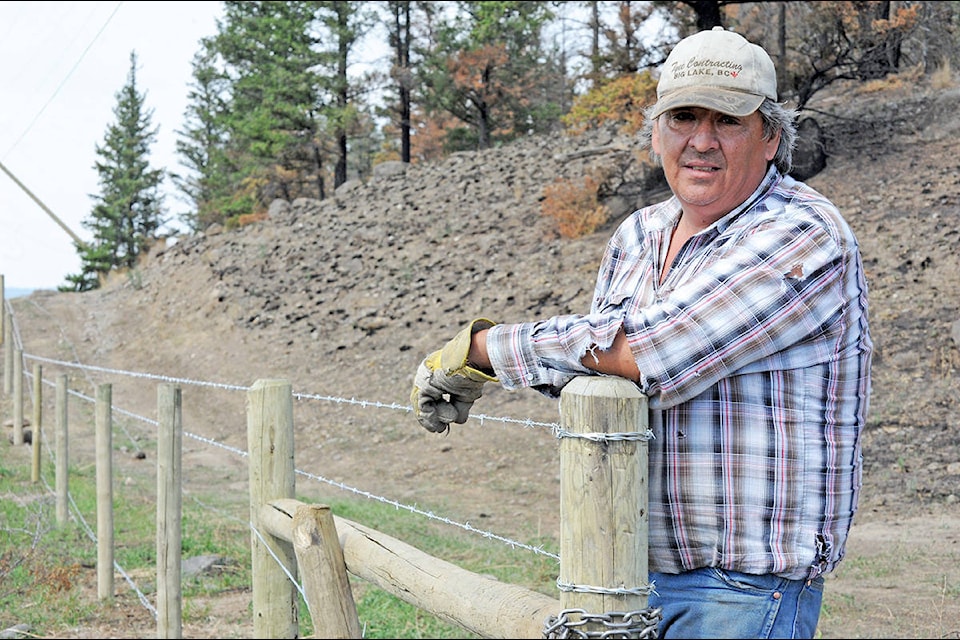Motorists driving out west on Highway 20 will see homes taken by wildfire, other structures narrowly missed and signs of resilience by the residents who live there.
Hundreds of kilometres of fencing is currently being either replaced or mended to keep cattle off the highway while a message of hope, “Riske Creek Strong,” has been scrolled on the window of the Loring home, which family and neighbours fought to save from fire last month.
Fires continues to be a threat for the area, as the Riske Creek-Hanceville fire sits at a staggering 232,599 hectares in size and is about 30 per cent contained.
According to the BC Wildfire Service, however, firefighters continue to make good progress in the Fletcher Lake and Farwell Canyon areas. Crews continue to mop-up in the northwestern flank of the fire, south of Henry Lake while fire activity was active south of Gay Lake but crews are continuing to action visible smokes.
The ongoing devastation to ranchers in the area is evident in the loss of forage and fencing that stretches for miles along Highway 20.
Calvin MacLeod, an employee of Tyee Lake Contracting, was working to restore some of those fences just east of Hanceville Friday.
“It’s a priority to get the cattle off the road,” MacLeod said, noting the fencing crew has been working in the area since Aug. 7.
MacLeod was himself impacted by wildfires, working to help stop the Wildwood fire near Forest Lake which threatened his home at Tyee Lake. MacLeod described embers as big as his hand being thrown into his backyard by the raging fire a kilometre away in July, and a brief evacuation before getting right back to work.
“The fire was pretty bad but nothing like what has happened out here,” MacLeod said, motioning to the Hanceville area where homes and businesses were lost. “It’s devastating.”
Further west down the road, Mexican fire fighters were the guests of honour at the Tl’etinqox First Nation (Anaham) community Friday afternoon, where the group was recognized for their efforts working the front lines of one of the biggest fires in B.C.’s history.
Tl’etinqox elder Melanie Bobby, Tsilhqot’in Youth Ambassador Peyal Laceese and Xeni Gwet’in Chief Roger William stood at the entrance of the community’s new school to sing and drum a traditional welcome for the fire fighters, who marched in single file wearing their signature bright yellow uniforms, cleaned and pressed but with some soot and ash stains still evident.
Tl’etinqox Chief Joe Alphonse welcomed the fire fighters to their territory and thanked them for their service.
He also retold the community’s own wildfire story of how members chose to stay behind and fight the fires, against the wishes of the RCMP, and during strained relations with government.
“The threat to our community was real and it was very stressful, it’s still stressful. It will take some time before we get past that,” Alphonse said.
“You guys are Indigenous people … we are grateful for you guys and we are honoured that you came and fought (fires) within our territories.”
Chief Roger also thanked the efforts of the BC Wildfire Service, and commended Tl’etinqox for their leadership during the crisis.
The Mexican fire fighters, which numbered more than 70, were served a traditional lunch complete with smoked fish, soups and stews and bannock and were each later presented with a traditional gift of handmade artwork from the community.
Representatives from the RCMP and BC Wildfire Service were also invited by the community to join in the lunch.
The following day, the last of the community’s elders were also welcomed home, signalling some hope that a sense of normalcy is on the horizon.
